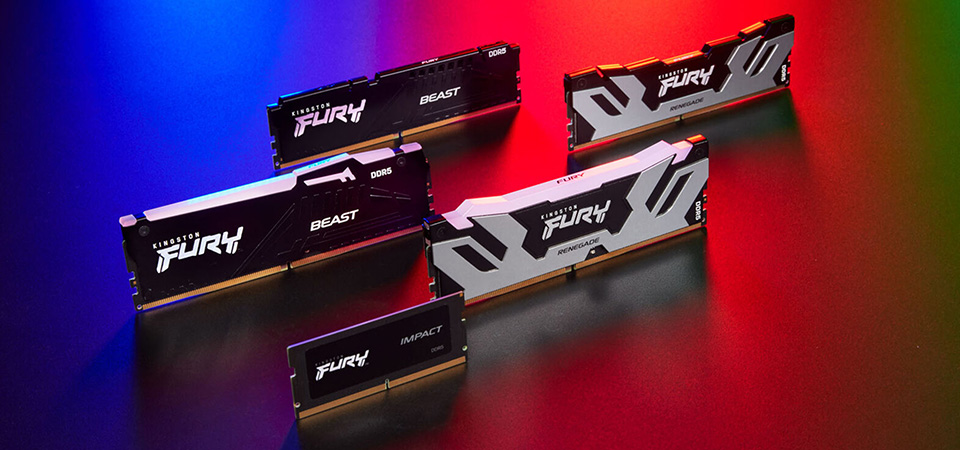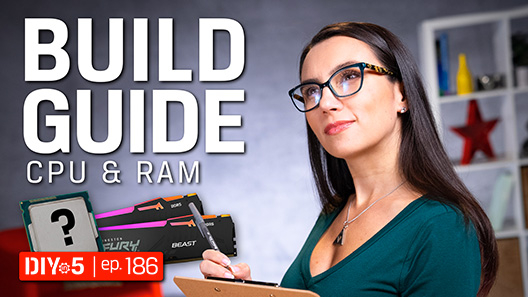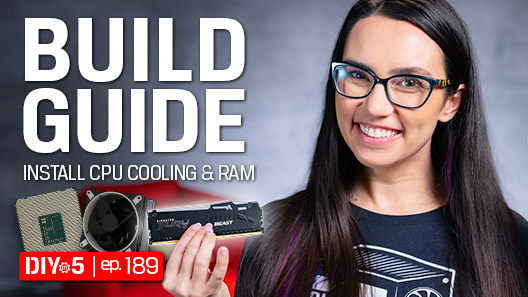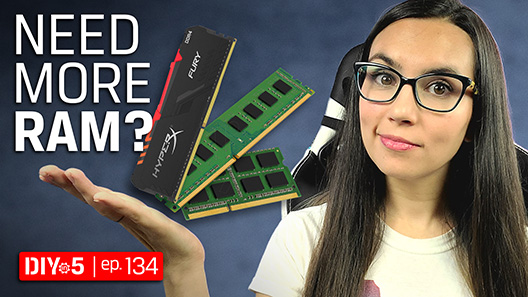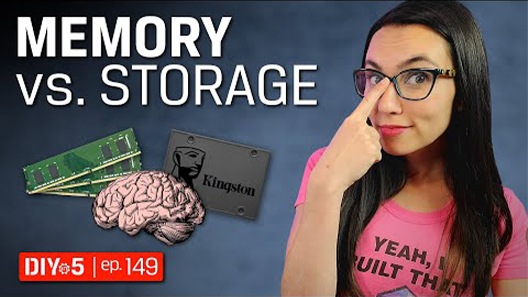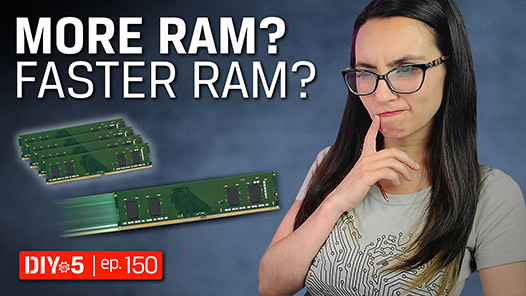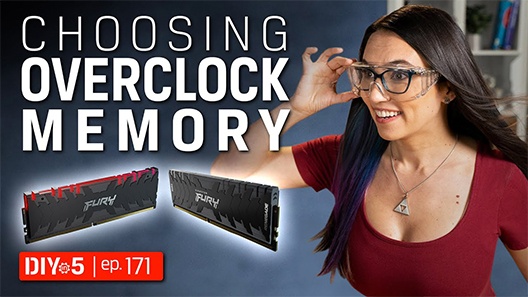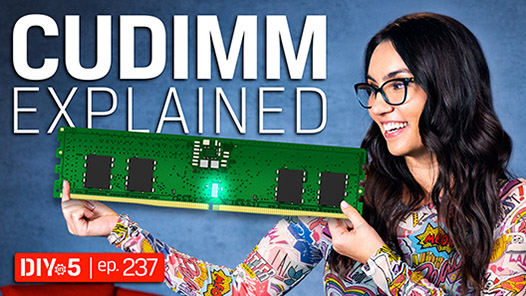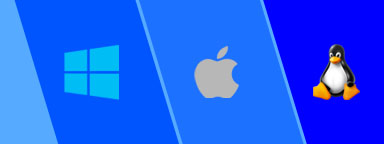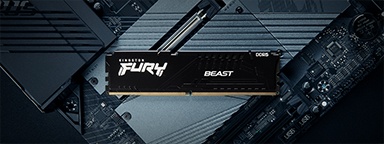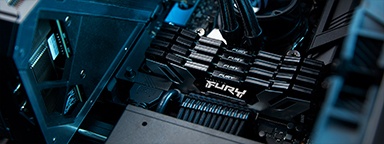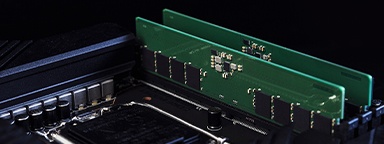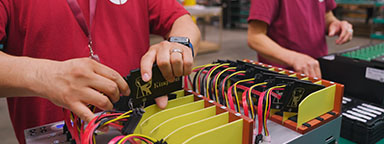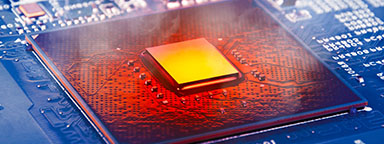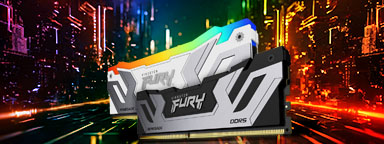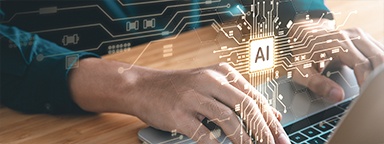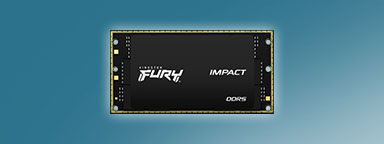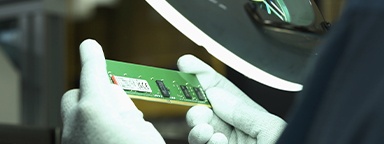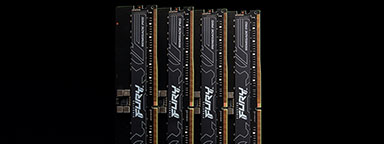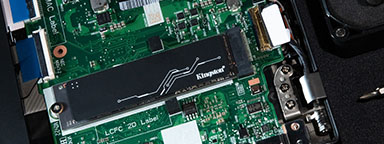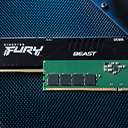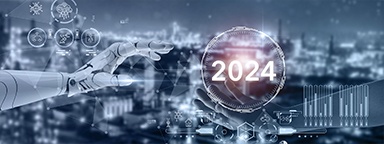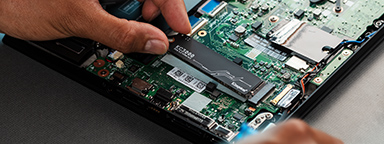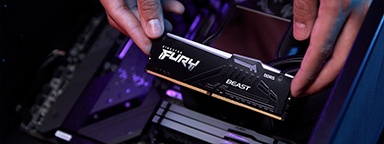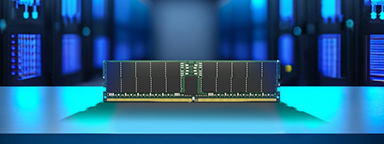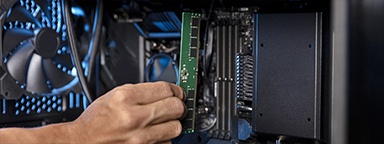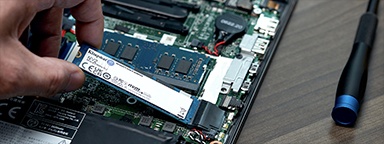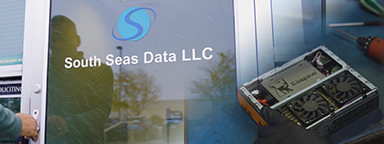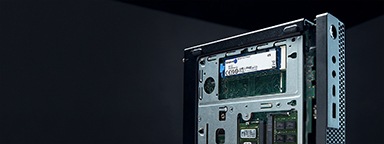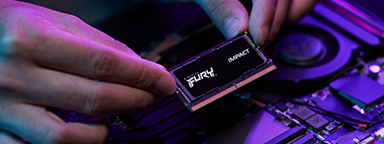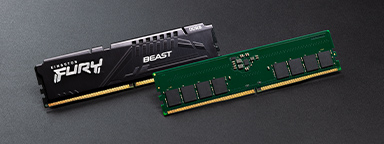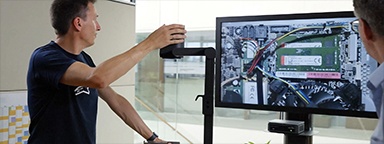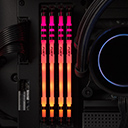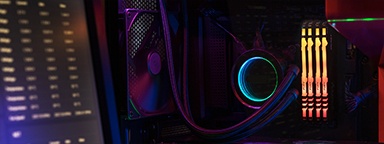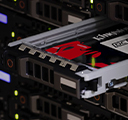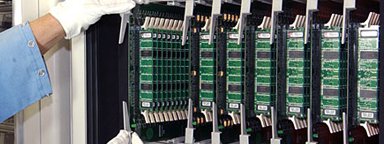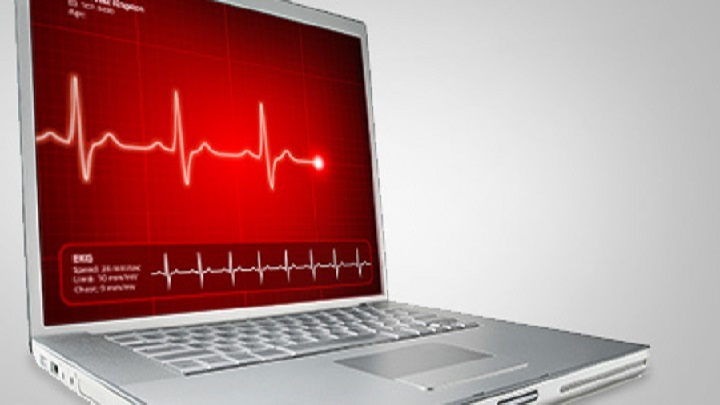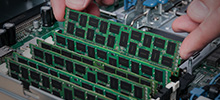
Computer memory, or more specifically RAM, is essential to the function of a computer, holding data temporarily between the processor and primary storage (Solid-State Drive / Hard Disk Drive). RAM is an acronym for Random Access Memory, and the most common form used today is DRAM (Dynamic Random Access Memory). This memory is volatile, meaning that power is required to hold the data, and if not saved to storage it can be lost when power is cut.
Today’s computers use Synchronous Dynamic Random Access Memory (SDRAM), which traditionally connects to your computer’s motherboard via a memory module. Memory modules come in industry standard form factors, with the most common for PCs and laptops being a DIMM (Dual In-Line Memory Module) or SODIMM (Small Outline DIMM). SDRAM was introduced in the late 1990s for PCs, and in 2000 received a performance boost with the advent of DDR (Double Data Rate) SDRAM, which doubled the number of data transfers per clock cycle. Since then, DDR SDRAM has evolved considerably to provide faster performance, more bandwidth, and higher capacities, all while using less power to save on energy costs, extend battery life for laptops, and reduce heat. The latest version is in its 5th generation, known as DDR5 SDRAM, or just “DDR5” for short. When shopping for memory, you’ll notice that most vendors drop the term “SDRAM” and simply specify DDR5 and a speed rating. Just like all previous generations, DDR5 is offered in a range of industry standard speeds, beginning at 4800MT/s or DDR5-4800. Sidenote, “MT/s” means megatransfers per second and indicates the speed at which data is transferred on and off the memory module. For many years “MHz” (MegaHertz) was used to describe memory speed, however this was an inaccurate term for DDR since memory speed is rated in transfers per second, not cycles per second.
The industry standards body (JEDEC) for memory introduces new generations of DDR about every 7 years, and within each generation they plan for all the speed increases, densities, and configurations they can imagine will be needed for computers in the future. For example, the last generation DDR4 covered a speed range of 2133, 2400, 2666, 2933, and 3200MT/s. DDR5 started at 4800MT/s, with planned increases to 5200, 5600, 6000, and 6400MT/s. Since the initial planning phase, the DDR5 specification has been expanded to include 6800, 7200, 7600, 8000, 8400, and 8800MT/s. Intel and AMD typically release new chipsets and processor generations every year, enabling the next standard memory speed. In the case of DDR5, the competition between the processor giants resulted in a leapfrogging of memory speeds supported, making DDR5 one of the fastest evolving memory technologies in history.
One important distinction between memory generations is that they are not backwards compatible. A DDR5 memory module will not physically fit into a DDR4 or DDR3 memory socket. While they may look similar, a notch on the bottom of the module acts as a key and will only fit into a compatible socket. Within a memory generation, however, faster memory speeds are always backwards compatible. For example, if you purchase a standard DDR5-5600 module and use it with a 12th Generation Intel processor, the memory will automatically “clock-down” to operate at DDR5-4800MT/s, conforming to the limitations of the Intel processor.
Why is computer memory important?
Like humans, computers have two types of memory. Our short-term memory is like how RAM works, holding onto information and details to get immediate tasks completed. If a computer didn’t have RAM, the processor would be forced to rely upon storage, like our long-term memory, which would be far slower.
When a computer is turned on, the operating system (eg. Windows, macOS, Linux) is retrieved from storage and loaded into RAM, as well as any background applications. More RAM capacity means more space is available for your computer to store this fast-access data, allowing it to run more applications or have more files open concurrently. RAM is significantly faster to access than storage, even bleeding-edge SSDs, making it one of the most critical components in computers.
Characteristics of computer memory
- Semiconductor-based
- Faster than storage
- Essential to a computer’s operation
- Volatile
Memory Terms
DRAM: Dynamic Random Access Memory, stores data with a transistor and capacitor pair. The use of capacitors to store data means this type of memory must be frequently refreshed to maintain data integrity, which is why it is called dynamic.
SDRAM: Synchronous DRAM, memory which synchronizes the memory module’s responses with the system clock as opposed to operating independently of the processor.
DDR: Double Data Rate SDRAM, transfers data to the processor on both the rising and falling edges of a clock cycle, significantly increasing performance.
DDR2 / DDR3 / DDR4 / DDR5: Successive generations of DDR SDRAM technology, with each providing increases in speed and bandwidth while lowering the power requirements. Improvements to data integrity and efficiencies are also designed into each new generation.
ECC: Error Correction Code is a processor/chipset feature enabled by memory modules with extra DRAM components. ECC can correct corrupted data, preventing data loss and systems from locking up or crashing.
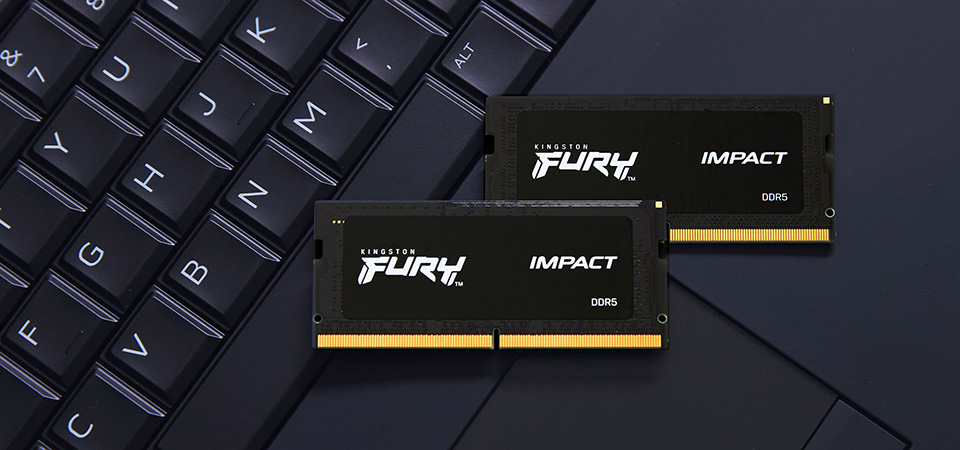
What is virtual memory?
When there’s an insufficient amount of RAM capacity to hold all the data and applications open, the operating system (OS) creates a space in storage to temporarily buffer RAM. Since storage can be significantly slower than RAM to read and write to, using virtual memory can slow productivity. While it’s common for the OS to move inactive data into virtual memory to free up memory capacity for active processes, the rule of thumb is to provision more memory capacity in a computer than you plan to use, as hardware demands typically increase year over year.
How to choose memory
When deciding which memory technology or speed to use for your PC or laptop, it really comes down to the processor and motherboard. Knowing the make and model of a computer will help you find what memory technology the processor is compatible with and what the memory socket configuration is on the motherboard. Most computers are designed to use memory modules in identical pairs for optimal performance, and there may be rules for the types and capacities that are supported.
Finding compatible memory is not always easy, and if you’re not very technical it might even be intimidating. Kingston’s Product Finder makes it easy to find the right memory solution for your computer. Simply search by the make and model number of your system to find the right memory technology and upgrade path. If you need help finding your model number, see our guides below on finding the model number and compatible memory for Dell, Lenovo, Acer and HP PCs.
